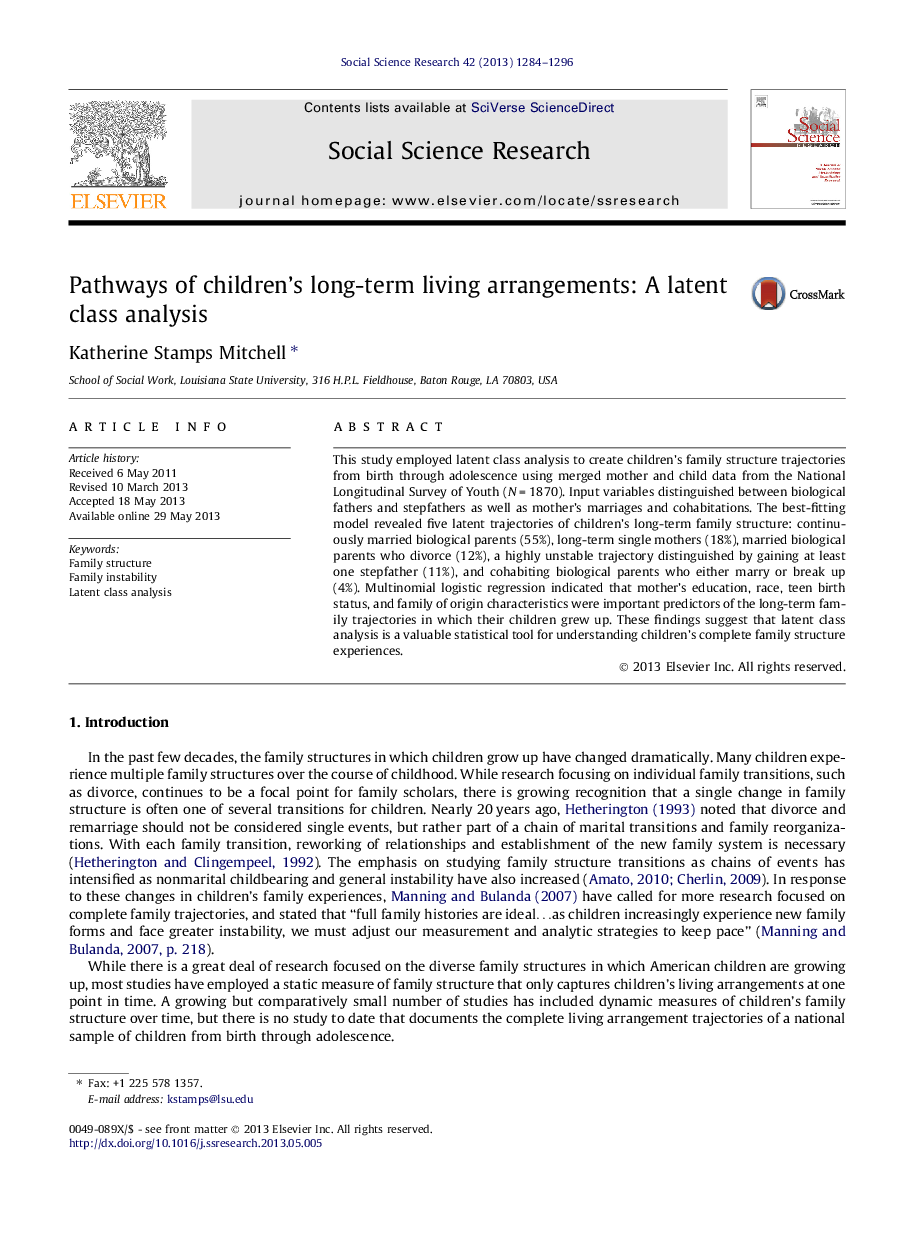| Article ID | Journal | Published Year | Pages | File Type |
|---|---|---|---|---|
| 956050 | Social Science Research | 2013 | 13 Pages |
•Latent class analysis is used to measure children’s long-term family structure.•Latent class analysis reveals parsimonious, useful family structure classifications.•American children generally grow up in one of five family structure trajectories.•Two trajectories are stable but three involve multiple family transitions.•Mother characteristics are highly predictive of children’s family trajectories.
This study employed latent class analysis to create children’s family structure trajectories from birth through adolescence using merged mother and child data from the National Longitudinal Survey of Youth (N = 1870). Input variables distinguished between biological fathers and stepfathers as well as mother’s marriages and cohabitations. The best-fitting model revealed five latent trajectories of children’s long-term family structure: continuously married biological parents (55%), long-term single mothers (18%), married biological parents who divorce (12%), a highly unstable trajectory distinguished by gaining at least one stepfather (11%), and cohabiting biological parents who either marry or break up (4%). Multinomial logistic regression indicated that mother’s education, race, teen birth status, and family of origin characteristics were important predictors of the long-term family trajectories in which their children grew up. These findings suggest that latent class analysis is a valuable statistical tool for understanding children’s complete family structure experiences.
